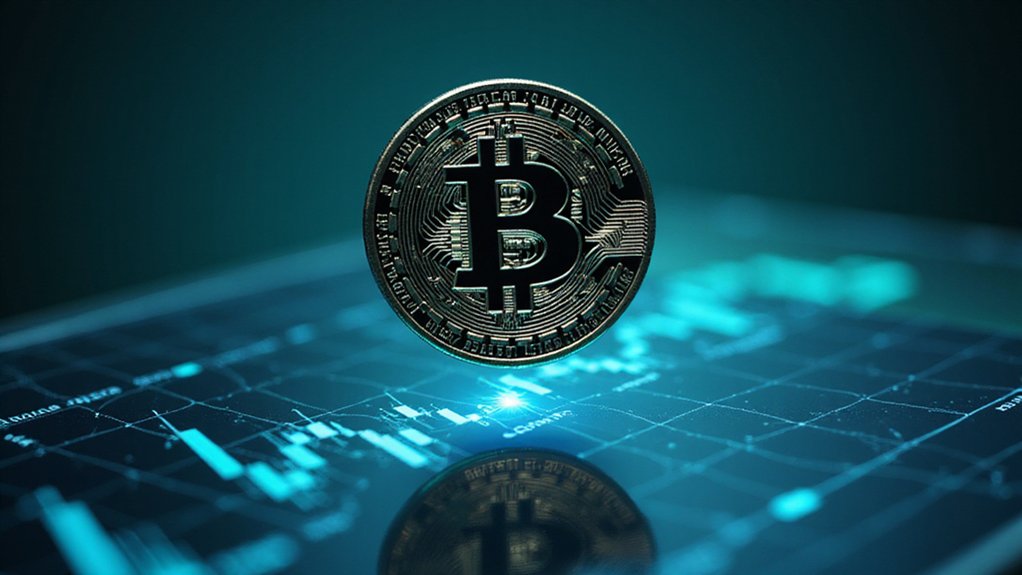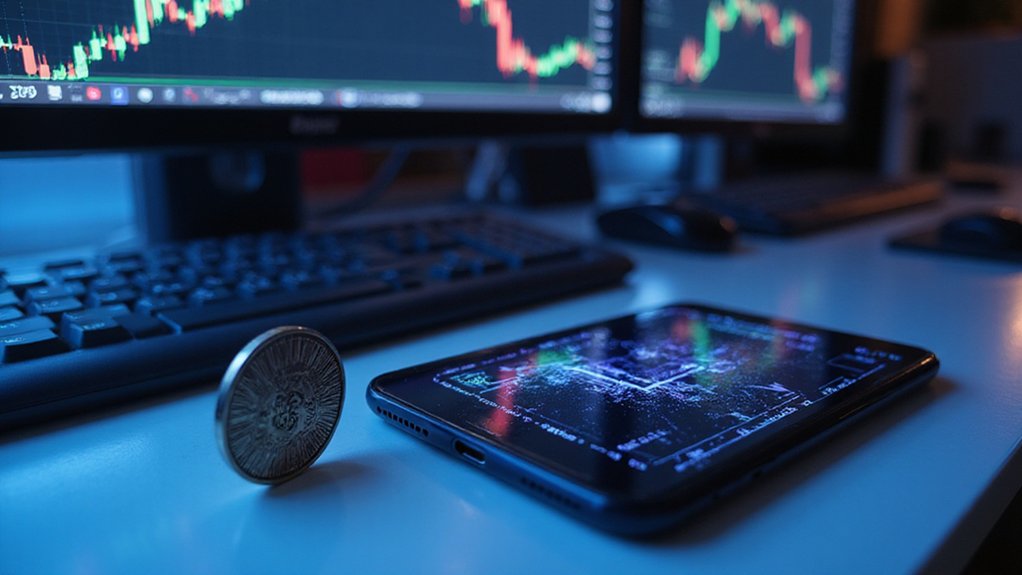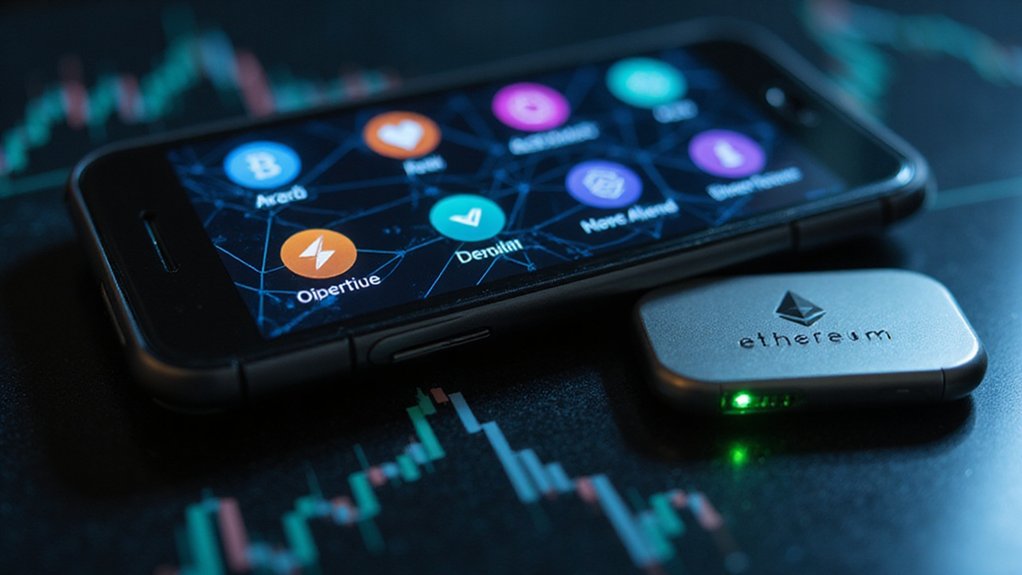Purchasing next-generation cryptocurrencies requires accessing specialized exchanges and establishing compatible digital wallets—an ironic process that often demands government ID verification for supposedly decentralized systems. These coins offer compelling advantages: transaction speeds measured in seconds, dramatically reduced fees, and smart contract capabilities that eliminate intermediaries (much to traditional banking’s consternation). While timing remains vital given market volatility, their technological superiority—featuring Proof-of-Stake consensus mechanisms and parallel transaction processing—presents a fundamental reimagining of digital value exchange beyond mere speculation.

Why are investors increasingly pivoting toward Next Gen Coins despite the notorious volatility that characterizes the broader cryptocurrency market?
The answer lies in their remarkable technological superiority—a quantum leap beyond their predecessors that promises to reshape digital finance.
These innovative cryptocurrencies offer transaction speeds measured in seconds rather than minutes, dramatically reduced fees, and the capacity to process thousands of transactions per second (a stark contrast to Bitcoin’s modest seven).
The architecture underpinning Next Gen Coins represents a paradigm shift in blockchain technology.
By leveraging Proof-of-Stake consensus mechanisms instead of energy-intensive mining operations, these currencies simultaneously address environmental concerns while enhancing network efficiency.
Their integration of smart contracts—self-executing agreements with terms directly written into code—enables complex financial transactions without intermediaries, a development that traditional banking institutions are watching with barely concealed trepidation.
Sui exemplifies this evolution with its DAG architecture that enables parallel transaction processing for unprecedented scalability.
Purchasing these digital assets typically requires accessing specialized cryptocurrency exchanges, establishing compatible digital wallets, and completing increasingly stringent KYC verification processes.
(The irony of providing government identification to participate in a system designed to circumvent governmental monetary control is not lost on seasoned crypto enthusiasts.)
Timing remains vital; the market’s notorious volatility means today’s bargain could become tomorrow’s cautionary tale.
Sui, among other emerging contenders, has garnered attention for its innovative approach and projected growth potential through 2025.
These coins benefit from enhanced interoperability between blockchain systems—essentially creating highways where previously only footpaths existed—allowing for seamless asset transfer across different networks.
Next Gen Coin’s compatibility with Atomic Wallet integration provides users with a secure and user-friendly platform for managing their digital assets.
The investment thesis for Next Gen Coins hinges on their practical utility rather than mere speculative fever.
Their scalability solutions address fundamental limitations that have constrained widespread cryptocurrency adoption.
Additionally, their governance models often incorporate decentralized decision-making, giving stakeholders genuine influence over protocol development—a stark departure from both traditional finance and first-generation cryptocurrencies.
For the discerning investor, these technological advancements represent not merely incremental improvements but a fundamental reimagining of digital value exchange—one that warrants serious consideration despite the inherent risks.
Frequently Asked Questions
What Fees Are Associated With Buying Next Gen Coin?
Purchasing Next Gen Coin typically incurs a layered fee structure that would make a Renaissance tax collector blush.
Investors face exchange trading fees (usually percentage-based), network gas fees (fluctuating with blockchain congestion), and various ancillary costs including deposit/withdrawal charges and potential spreads.
The coin’s limited market cap (a modest $162) exacerbates matters through slippage and volatility.
Savvy buyers might leverage promotional fee waivers—though such offerings merely soften, rather than eliminate, the financial friction inherent in cryptocurrency acquisition.
Can I Transfer Next Gen Coin to Hardware Wallets?
Transferring “Next Gen Coin” to hardware wallets requires verification of compatibility first—a step many enthusiasts overlook in their haste to secure assets.
While Ledger, Trezor, and Satochip support numerous cryptocurrencies, specific support for this particular coin isn’t explicitly confirmed in the provided information.
Before attempting any transfer, users should verify wallet compatibility, confirm proper software integration, and complete all security protocols (PIN setup, seed phrase backup) to avoid the all-too-common pitfall of stranded assets.
Is Next Gen Coin Available in All Countries?
Next Gen Coin’s availability varies greatly by jurisdiction.
While the Ethereum-based token is theoretically accessible globally through decentralized exchanges, practical availability depends on local regulatory frameworks.
Some nations ban cryptocurrency trading outright, while others impose KYC/AML requirements on exchanges.
The token’s limited circulation (zero tokens in active supply) further restricts accessibility.
Users should consult local regulations, as exchange access—particularly on regulated platforms like Coinbase—differs dramatically across territorial boundaries.
What’s the Minimum Investment Amount for Next Gen Coin?
The minimum investment amount for Next Generation Network (NGN) isn’t explicitly stated in the provided information.
While purchasable via Binance, the platform likely imposes standard minimum order sizes rather than project-specific thresholds.
Unlike $WAI and $DICE tokens—which had defined presale parameters—NGN’s entry point would typically be determined by exchange-specific minimums, gas fees, and prevailing market liquidity conditions.
Prospective investors should consult Binance’s current trading requirements, as these often constitute the effective floor for participation.
How Quickly Can I Sell My Next Gen Coin?
The liquidity of any “next gen coin” depends on several market factors.
Selling speed correlates directly with exchange listings (major platforms facilitate quicker exits than obscure ones), overall market sentiment, and trading volume.
During bull cycles, unloading positions becomes remarkably efficient; during downturns, patience becomes necessary currency.
Layer 2 solutions like Solaxy potentially enhance transaction speeds, though regulatory shifts could impede even the most liquid assets.
Smart investors establish exit strategies before purchasing, rather than contemplating liquidity as an afterthought.









